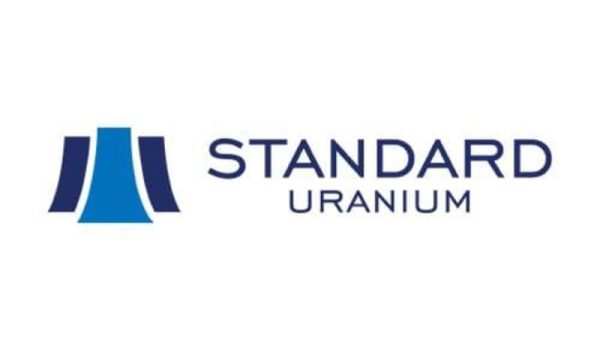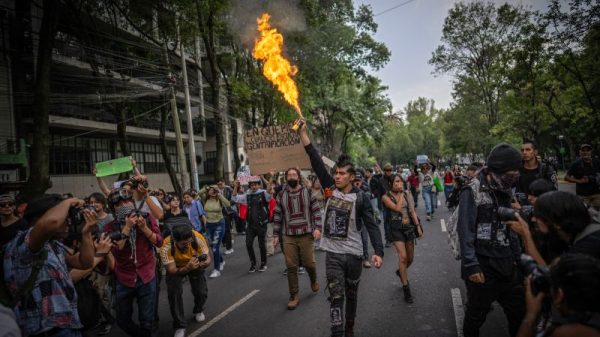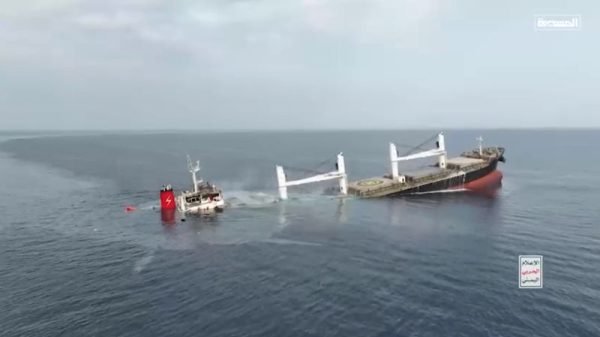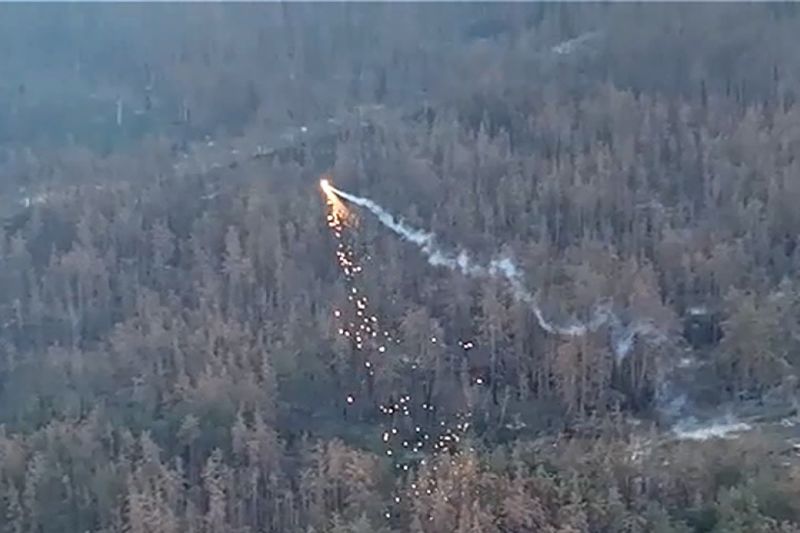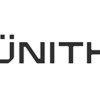Ukraine appears to be calling on a fleet of fire-spewing “dragon drones” in its war with Russian invaders, putting a modern twist on a munition used to horrific effect in both world wars.
A series of videos posted on social media, including on Telegram from the Ukrainian Defense Ministry on Wednesday, show the low-flying drones dropping torrents of fire – actually molten metal – onto Russian-held positions in tree lines.
The white-hot mixture of aluminum powder and iron oxide, called thermite, burns at temperatures up to 4,000 degrees Fahrenheit (2,200 degrees Celsius). It can quickly burn off trees and vegetation giving cover to Russian troops, if not killing or disabling the troops outright.
As it falls from the drone, the thermite resembles the fire coming from the mouth of the mythical dragon, giving the drones their nickname.
“Strike Drones are our wings of vengeance, bringing fire straight from the sky!” a social media post from Ukraine’s 60th Mechanized Brigade said.
“They become a real threat to the enemy, burning his positions with an accuracy that no other weapon can achieve,” the post continued.
“When our ‘Vidar’ works – the Russian woman will never sleep,” it added. Vidar is the Norse god of vengeance.
Creating that kind of fear is likely the main effect of Ukraine’s thermite drones, according to Nicholas Drummond, a defense industry analyst specializing in land warfare and a former British Army officer.
“I understand that Ukraine only possesses a limited capacity to deliver a thermite effect, so this is a niche capability rather than new mainstream weapon,” he said.
But he acknowledges the terror thermite can create.
“I would not have liked to have been on the receiving end,” Drummond said.
Incendiary weapons in war
Thermite can easily burn through almost anything, including metal, so there’s little protection from it.
It was discovered by a German chemist is the 1890s and was originally used to weld railroad tracks.
But its military potency soon became apparent, with the Germans dropping it from zeppelins as bombs over Britain in World War I, according to a history from McGill University in Montreal.
Both Germany and the Allies used thermite aerial bombs in World War II, and they also utilized it to disable captured artillery pieces, putting thermite into the breech and melting the weapon shut from the inside.
According to Action on Armed Violence (AOAV), a British anti-war advocacy group, Ukraine has previously used thermite dropped from drones to permanently disable Russian tanks.
The thermite is dropped “directly through the hatches, where the intense heat quickly ignites and destroys everything inside,” an AOAV report says.
“This precision, combined with the drone’s ability to bypass traditional defenses, makes thermite bombs a highly effective tool in modern warfare,” it says.
Thermite is just one type of incendiary weapon, with others including napalm and white phosphorus.
The United Nations Office for Disarmament says incendiary weapons can cause massive destruction and environmental damage.
“The fires produced by the weapon itself or ignited by it are difficult to predict and to contain. Therefore, incendiary weapons are often described as ‘area weapons’ due to their impact over a broad area,” it says on its website.
The United States used napalm to burn much of Japan’s capital to the ground in World War II’s infamous Tokyo fire raids. US forces also used it extensively in Vietnam.
The US military has also used thermite in grenades, with the US Army’s Pine Bluff Arsenal producing the weapons from the 1960s through 2014 and then resuming production again in 2023.
What thermite does to humans
Under international law, thermite is not banned for military combat, but its use on civilian targets is prohibited because of the horrible effects it can have on the human body.
In a 2022 report on incendiary weapons, such as thermite, Human Rights Watch called them “notorious for their horrific human cost,” including inflicting fourth- or fifth-degree burns.
“They can cause damage to muscles, ligaments, tendons, nerves, blood vessels, and even bones,” HRW said.
Treatment can last months and require daily attention. If victims survive, they are left with physical and psychological scars, HRW said.
Russian President Vladimir Putin ordered a full-scale invasion of Ukraine in February 2022. Moscow’s initial push into Ukraine was stopped far short of capturing the capital of Kyiv, and the sides have fought over much of the same territory for most of the war.
Ukraine’s forces, outnumbered and outgunned by Russia, have proven adept at innovating with small drones to hammer Moscow’s troops and equipment.
A Ukrainian incursion into Russian territory near Kursk in August surprised Putin and has boosted Ukrainian confidence that it can prevail in the war.
Kyiv has accused Russian forces of using unspecified incendiary munitions on civilian targets earlier in the war, including on a village outside of Kharkiv, Ukraine’s second-largest city, in May 2022.
Ukrainian officers also accused Russia of using incendiaries in attacks on the city of Bakhmut last year.
Those uses of incendiaries haven’t led to quick victory for Russia, and Drummond doesn’t think they are a battlefield game changer for Ukraine either.
“If Ukraine wants to achieve real impact, it needs sufficient mass to force a proper breakthrough as it has in Kursk. This is what victory looks like,” Drummond said.
But thermite does give Russian troops another reason to be fearful of Ukrainian drones, he said.
“We have seen instances where Russian forces attacked by multiple drones have deserted their positions. The more Ukraine can instill a fear of drones the better its chances of success,” he said.
“Thermite keeps up the pressure.”


